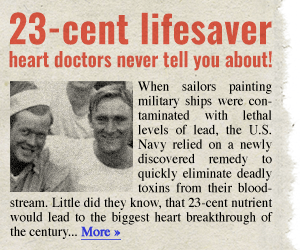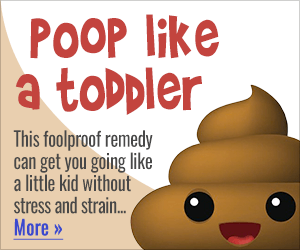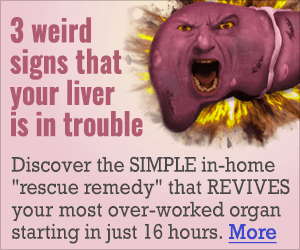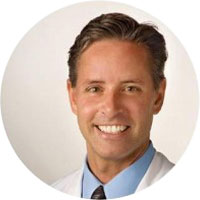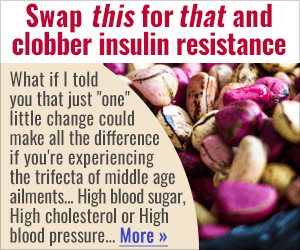Get Easy Health Digest™ in your inbox and don’t miss a thing when you subscribe today. Plus, get the free bonus report, Mother Nature’s Tips, Tricks and Remedies for Cholesterol, Blood Pressure & Blood Sugar as my way of saying welcome to the community!
7 vitamin D links to defeating disease

I was speaking with my mother recently, and she said her doctor told her she had too much calcium in her blood. This was a little disturbing, as elevated calcium can lead to gastrointestinal dysfunction, kidney stones and even heart attacks in women.
My first question for her was, “What was your baseline vitamin D level (before starting supplementation), and how high is it now?”
She said, “My doctor has never checked my vitamin D level.”
That’s a shame, but it didn’t surprise me. Blood testing for vitamin D levels is still not standard care, despite the fact that we’ve learned more about the importance of vitamin D over the past 25 years than we ever knew before.
You see, the reason I asked my mother about vitamin D is that it’s not only a vitamin but a hormone that tells your bones how much calcium to store and release. Insufficient vitamin D can lead to weak bones, and excessive calcium can accumulate in the bloodstream.
But that’s not all…
A host of illnesses are also associated with vitamin D deficiency
In a minute, I’ll show you precisely what you need to do to make sure you have enough vitamin D.
It’s essential if you’re at or nearing the same stage of life as my mother, postmenopausal for women, or over 50 for men.
That’s because there is plenty of scientific evidence that vitamin D deficiency is linked to osteoporosis, heart disease and even cancer.
Consider that more than 1 in 3 American adults are deficient in vitamin D, and you get an idea of why so many of us suffer from disease.
The National Health and Nutrition Examination Survey (2005-2006) examined 4,495 adults to determine their serum 25-hydroxyvitamin D concentration, which reflects the amount of bioactive vitamin D they had.
Overall, 40 percent of the individuals they examined were deficient in vitamin D (levels below 20 ng/mL). The deficiency rate was highest for African-Americans (82.1 percent), followed by Hispanics (69.2 percent).
Low vitamin D levels were associated with individuals who were obese, in poor health, had hypertension, low HDL (high-density lipoprotein) cholesterol, and didn’t drink milk daily.
You may be wondering what came first, the illnesses or the low vitamin D?
Consider this:
Bone builder: By the year 1900, 80 percent of children in New York and Boston had developed rickets (short stature and deformities of the skeleton) because of a lack of vitamin D. This condition was later eradicated by 1930 through:
- The use of cod liver oil (high in vitamin D),
- A recommendation to go outside in the sunshine (your body makes vitamin D from the sun),
- Fortifying dairy and other staple foods with vitamin D.
Aging adults are at increased risk for thin and brittle bones (osteoporosis), leading to fractures, not because of low calcium, but because of low vitamin D.
Freedom of movement and mobility: Moderate vitamin D deficiency can mean worsening knee and hip pain in those 50-80 years old. Low vitamin D also causes muscle weakness and pain. That increases your risk of falling as you age. One study that analyzed results from a pool of other clinical trials found that taking just 1,000 IU per day reduced falls by 19 to 23 percent.
What’s more, vitamin D deficiency is highly prevalent and linked to disease severity in patients with rheumatoid arthritis. Doctors like me who know about vitamin D use it instead of pharmaceutical drugs to reduce pain.
The greatest cancer fighter: Several major studies show that low vitamin D levels increased the risk of colorectal, lung, prostate, breast and ovarian cancers. Meanwhile, getting enough vitamin D reduces the risk of dying from 15 different types of cancer.
Did you know that vitamin D and calcium supplementation together lower the risk of developing any type of cancer by over 75 percent?
In a double-blind, randomized, placebo-controlled trial — the most stringent study you can do in medicine — researchers followed 1,179 postmenopausal women for 4 years.
They discovered that those who supplemented with 1,400 mg of calcium (I recommend only supplementing calcium if your doctor advises) plus 1,100 IU of vitamin D3 had 76.8 percent fewer cancers after the first year compared to the group that received no extra vitamin D.
Heart of a champion: Vitamin D deficiency is associated with increased rates of the following: high blood pressure, elevated cholesterol and peripheral blood vessel disease.
Most critically, cardiovascular disease, heart attack, heart failure and stroke are all higher in those with vitamin D deficiency. Taking the right amount of vitamin D can reduce your risk of any of these conditions by 20 percent, largely due to its anti-inflammatory effects.
Feel-good factor: I want you to do something for me… next time the sun is high and shining in the sky, go outside and let the sunlight hit your face for just a minute or two. Did it feel good or make you happy? There’s a reason for that.
You see, when you make vitamin D, it helps protect against serotonin and dopamine depletion in the brain. Serotonin and dopamine are the primary feel-good neurotransmitters in your brain. It appears that vitamin D deficiency increases your risk for depression by as much as 14 percent.
Blood sugar’s best friend: Your risk for diabetes increases substantially if your blood vitamin D level is below 14 mg/ml (optimal is 35-80 ng/ml). If you already have diabetes, you should know that a vitamin D deficiency worsens diabetes by decreasing natural insulin secretion.
Beating the real silent killer: You might know high blood pressure as the “silent killer” because it has few, if any, symptoms. But the real disease behind all of the chronic diseases, like hypertension and atherosclerosis, is inflammation. Low vitamin D is linked to inflammation, as indicated by raised C-reactive protein blood levels. In my experience, I can tell you that this is likely a link between low vitamin D and many other illnesses such as multiple sclerosis, tuberculosis, allergies, sleep apnea and even early death.
What contributes to having low vitamin D levels?
It’s beneficial to be aware of your risk for vitamin D deficiency. Here are some of the things that can depress your vitamin D levels:
- Weight: A BMI over 40 poses an 18- to 23% increased risk of vitamin D deficiency compared to a BMI below 40.
- Older age: By age 70 years, your vitamin D absorption is reduced by 25 percent.
- Intestinal diseases, such as Crohn’s, ulcerative colitis, celiac disease, or after gastric bypass surgery, can severely reduce your vitamin D absorption.
- Medications that deplete vitamin D levels include antifungals, anticonvulsants, glucocorticoids (such as prednisone), and HIV treatments.
- More rare conditions that cause you to lose vitamin D quickly are chronic kidney disease, primary hyperparathyroidism, granulomatous diseases and lymphomas.
- Taking the wrong form of vitamin D. There are two commonly used forms, D2 and D3. Recent research has confirmed that while D3 has definite effects on human health, the same can not be said for D2. Additionally, vitamin D3 is easily absorbed, which helps elevate and maintain levels more effectively.
How much vitamin D do you need?
Remember that the “recommended dietary intake” (RDI) was created to be the bare minimum you should get to prevent, say, rickets. To maintain your vitamin D in the optimal range (35 to 80 ng/mL), you’ll need to increase your intake.
First, you should have your level tested. The blood test you need is called a 25(OH)D blood test.
You can have it done by a doctor at their office, or you can use a home test and have it sent away to a lab.
I had my mother request that her level be tested and the results added to her standard comprehensive metabolic panel (CMP). But it can also be added to a CBC (complete blood count).
If you’re below 35ng/ml, here’s how to boost your level:
- Diet: Foods rich in vitamin D3 include fish oils, cold-water fish, dairy products, and butter. There’s only one vegetable that contains vitamin D, and that’s the mushroom, at 114 IU per cup.
- Sun exposure to your skin: 20 minutes of sunshine daily (I recommend using a paraben-free sunscreen on your face) will convert vitamin D in your skin to its activated form (D3). If you’re over 55, however, your body does not naturally convert sunlight into D3 as easily as it does in younger skin.
- Supplementation: Typically, up to 5,000 IU of vitamin D3 is sufficient to boost and maintain adequate levels. Be sure to choose a supplement containing vitamin D3, not the more commonly used D2. The body more easily absorbs D3 and helps it overcome a deficiency more effectively.
Editor’s note: Discover how to live a cancer prevention lifestyle — using foods, vitamins, minerals and herbs — as well as little-known therapies allowed in other countries but denied to you by American mainstream medicine. Click here to discover Surviving Cancer! A Comprehensive Guide to Understanding the Causes, Treatments and Big Business Behind Medicine’s Most Frightening Diagnosis!
Sources:
- Forrest KY, Stuhldreher WL. Prevalence and correlates of vitamin D deficiency in US adults. Nutr Res. 2011 Jan;31(1):48-54.
- Laslett L, Quinn S, Burgess J, Parameswaran V, Winzenberg T, Jones G, Ding C. “Moderate vitamin D deficiency is associated with changes in knee and hip pain in older adults: a 5-year longitudinal study.” Ann Rheum Dis. 2014 Apr;73(4):697-703.
- Kostoglou-Athanassiou I, Athanassiou P, Lyraki A, Raftakis I, Antoniadis C. “Vitamin D and rheumatoid arthritis.” Ther Adv Endocrinol Metab. 2012 Dec; 3(6): 181–187.
- Wranicz J, Szostak-Węgierek D. Health outcomes of vitamin D. Part II. Role in the prevention of diseases. Rocz Panstw Zakl Hig. 2014;65(4):273-9.
- Grant, W. et al, “The association of solar ultraviolet B (UVB) with reducing risk of cancer: multifactorial ecologic analysis of geographic variation in age-adjusted cancer mortality rates,”Anticancer Research 2006; 26:2687-2700
- Lappe J, Travers-Gustafson D, Davies K, Recker R, Heaney R. “Vitamin D and calcium supplementation reduces cancer risk: results of a randomized trial.” Am J Clin Nutr. 2007 Jun;85(6):1586-91.
- Kendrick J, Targher G, Smits G, Chonchol M. “25-Hydroxyvitamin D deficiency is independently associated with cardiovascular disease in the Third National Health and Nutrition Examination Survey.” Atherosclerosis 2009 Jul;205(1):255-60.
- Wranicz J, Szostak-Węgierek D. “Health outcomes of vitamin D. Part II. Role in prevention of diseases.” Rocz Panstw Zakl Hig. 2014;65(4):273-9.



